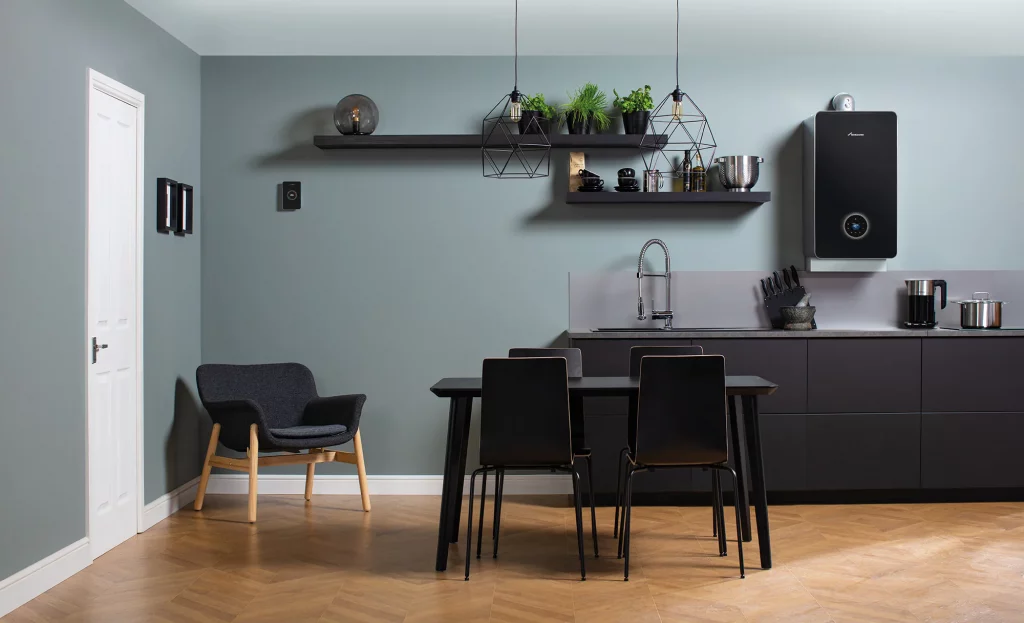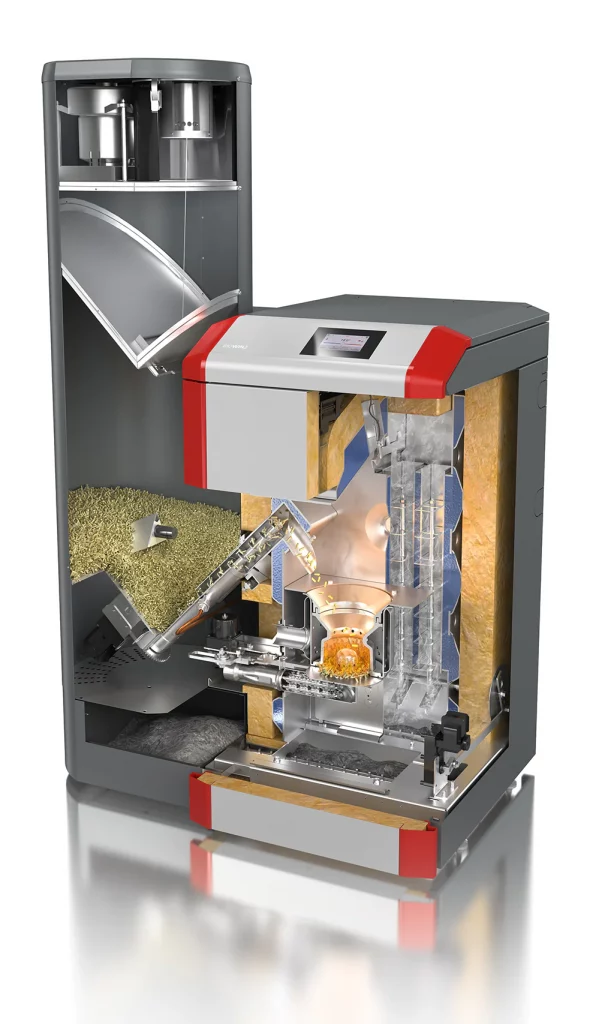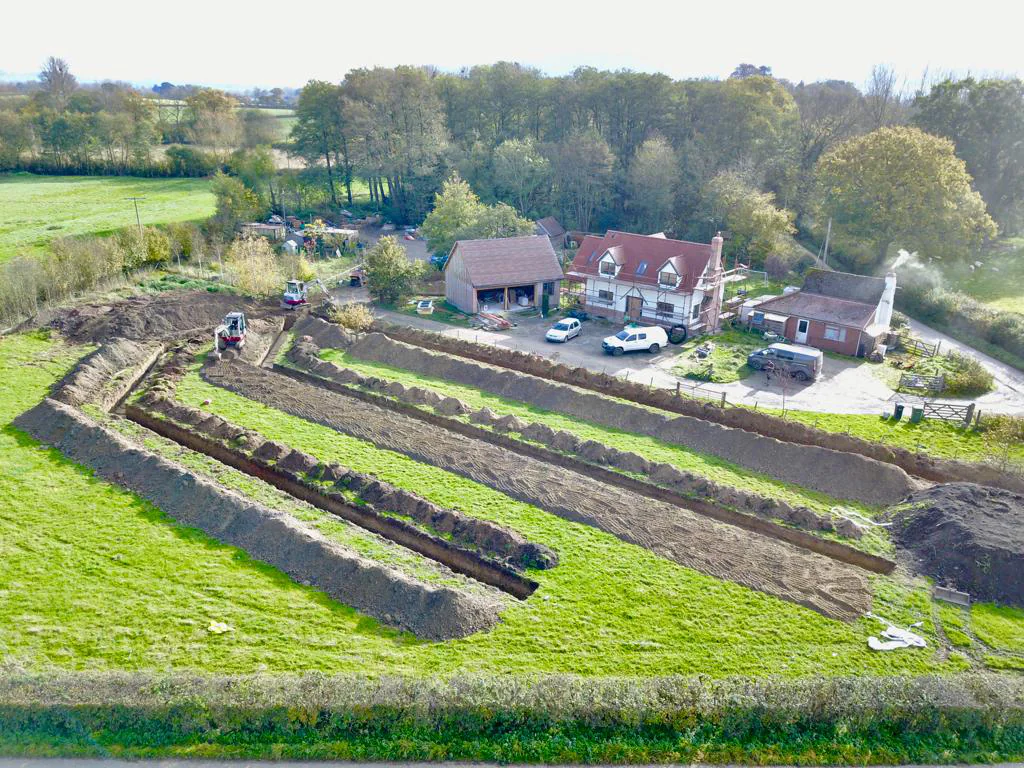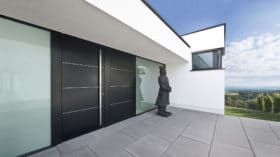
Early Bird Offer! Free tickets to meet independent experts at this summer's Build It Live
Save £24 - Book Now!
Early Bird Offer! Free tickets to meet independent experts at this summer's Build It Live
Save £24 - Book Now!How you choose to heat your new self build home is a major decision. This is about more than simply keeping cosy in winter: you’ll no doubt want a system that performs efficiently, keeps bills low and is easy to maintain in the future.
Exactly which option best suits your project will depend on a number of critical factors, including:
Your final decision will most likely come back to these key questions and what kind of balance you want to strike between each of them. So, in this article, I’m going to assess each of the main options in detail – from boilers through to heat pumps, solar thermal and more.
There’s a government proposal to phase out gas heating in new dwellings from 2025 and by implication switch over to heat pumps in most cases.
To my mind, this only makes sense if we stop using gas to generate electricity.

The Greenstar Lifestyle range from Worcester marries sleek looks with impressive performance, delivering the highest hot water flow rate of any wall-hung combi boiler on the market
Gas is one of the most affordable forms of heating. What’s more, it requires no effort to use, and is ideal for producing the higher temperatures needed for domestic hot water. Modern boilers work fine with both radiant and underfloor heat distribution, as well as warm air distribution systems.
Read more: Will Eco Heating Save You Money?
At current grid carbon intensity factors and depending on the building, gas is somewhat higher in carbon emissions per kWh (kilowatt-hour) of heat supplied than heat pumps or biomass, but lower than both oil and electrical resistance heating.
The central point to remember here is that, in a new home, you’ll be hitting very good levels of insulation and airtightness, so space heating demand should be minimal anyway.
What this means is that the environmental impact of your central heating in use should already be very low. In other words, you need to think about the embodied impact of installing the system itself.
As gas boilers are among the cheapest systems to fit (and maintain), largely because they use relatively little resource to manufacture and install – certainly less than a ground source heat pump. In general, the more money you spend, the greater your environmental impact.
Hybrid Boilers and Heat PumpsASHPs don’t perform to their maximum efficiency when it’s very cold outside. As a result, there’s a growing interest in hybrid heat pumps. These combine a fossil fuel burner (usually mains gas, but possibly LPG or oil) with an ASHP. The setup intelligently and automatically decides which source will be most cost-effective to run, switching between modes appropriately. In this case, the ASHP component would be used primarily during the shoulder months in the heating season, i.e. at either end of winter, when the air temperature is higher. The boiler would then most likely come to the fore in the coldest periods. Hybrid systems also make it easier to deal with the efficient provision of domestic hot water. The result will be a carbon saving in operation when compared to a boiler alone, but these setups are more expensive to install and maintain. An alternative technology that’s relatively new to the UK domestic scene is heat pump ventilation (HPV), available from the likes of Total Home Environment. These all-in-one systems provide efficient, integrated space heating, summer cooling and heat recovery ventilation in one package – so they can take care of comfort levels across a whole home. You can see the tech in action at Build It’s Self Build Education House. |
Those of us whose properties are off the gas grid will probably select either some form of heat pump or a biomass boiler. Of course, you might decide that you want to specify one of these options even if you can access the mains gas network – but it’s important to carefully think through your reasons for doing so first.
Another option is to use LPG (where liquid gas is delivered and stored on site) to fire your boiler. This is similar in terms of emissions to natural gas, and used to heat many off-grid properties.
There is also less pollution risk than oil. BioLPG (biopropane) is now widely available, too. This is compatible with propane equipment, but reduces carbon emissions compared to standard LPG.
This tech does the same job as a conventional gas boiler, providing space heating and domestic hot water. Biomass is any form of plant matter (normally wood) that can be burned to deliver heat.
This could be simply logs or it might be a wood waste product specifically designed for burning in boilers, such as wood chip or pellets. Wood is considered to be a carbon-neutral fuel, as the CO2 emitted from burning it is slightly less than the carbon that’s absorbed as the tree grows.
Learn More: Biomass Boilers Explained
Log boilers must be manually fed, so they need a fair bit of oversight and aren’t right for everyone. They’re normally batch fed, so you fire the boiler at a high temperature for a relatively short period of time, using it to heat a buffer tank that stores the warmth for later use in space and water heating.
I like to say that using logs warms you three times: when cutting, splitting and burning it. Plus they can sometimes be had for free.

The BioWIN2 Touch range of wood pellet boilers from Windhager (www.windhager.co.uk) offer a compact biomass solution, taking up less than 1.5m2 of space
Most domestic biomass boilers are fueled by wood pellets (wood chips are typically reserved for larger, commercial installations).
The consistency of pellets’ size and moisture content means they can be used in automated feed systems, delivering controlled heat on demand. The fuel can be delivered loose direct to a hopper or supplied in sacks for manual handling.
Pellets and chips are more expensive than logs per tonne (and per kWh of heat) as they have been processed. Bagged pellets cost around 6p/kWh but small blown deliveries can be had for around 5p/kWh (compared to gas at around 4p/kWh).
Obviously this varies by quantity, location etc. If your biomass installation is eligible for support via the Renewable Heat Incentive (RHI), then this subsidy will cover the cost of the fuel.
Heat pumps are designed to take low-grade energy from the ground or the air and convert this into usable energy at a higher temperature for space and water heating.
It takes electrical energy to run a heat pump, so it’s not a completely renewable system, although it does make use of a renewable source of heat.
For each unit of electricity used by the pump, you get several unit of heat output – and this is what makes the tech attractive. The ratio of the kilowatts of heat energy produced by the system to the kW of electricity that’s required to power the pump is known as the coefficient of performance (CoP).
If the system runs at a CoP of 3, this means that it produces three units of heat energy
for each unit of electrical input.
Final installed performance varies depending on insulation levels etc, but you might expect around a CoP of 2.5-3 for air source heat pumps (ASHPs) and 3-3.5 for ground source (GSHPs).

The paddock at the front of this four-bedroom self build home was the ideal location for three 50m lengths of slinky collector pipes for a Kensa Evo GSHP
Given the carbon intensity of the UK’s grid-based electricity is dropping, heat pumps are now lower in CO2 emissions than gas boilers – although they’re similar in terms of running costs.
Read more: Eco-Friendly Heating Systems for Renovators
Both ASHPs and GSHPs are more expensive to install than a standard boiler, however, which could be a major factor if the space heating demand is very low. What’s more, ground source versions require plenty of garden space for the collector loop.
Heat pumps work best in tandem with low temperature distribution systems such as underfloor heating (UFH). Less energy is required to raise the temperature of
the water to the required level (around 40C for UFH, compared to 60C-80C for standard radiators), so the pump runs more efficiently.
For the same reason, heat pumps are less efficient when providing domestic hot water (DHW) at the usual 60C. So it pays to work out what proportion of your heat demand is likely to be for DHW.
Some heat pumps can be operated in reverse to provide cooling. This is one occasion where there’s a good match with solar PV panels, as these should be generating plenty of power for the heat pump when there’s a demand for cooling.
By contrast, PV generation in winter is almost non-existent. However, it should be possible to design out the risk of overheating in most new homes – so this facility is more useful for large non-domestic projects.
Solar thermal panels collect energy from the sun and use it to deliver hot water for washing and bathing (they are rarely used for space heating). Much of the energy required to heat water is used to take it from cold to lukewarm so, even on dull days, they can do some work.
The key components of a solar water heater are the collectors, a storage cylinder and a controller. The storage vessel normally has two sources of heat – the solar coil and the boiler coil, so it is known as a twin-coil cylinder.
Solar water heaters require little or no maintenance, and cost nothing to run. They are much cheaper and lower tech than PV systems (used to generate electricity) and some are manufactured in the UK, which minimises the carbon intensity of installing them.
When you’re building a new home, you’ll have easy access to the roof and will be able to specify the correct cylinder from the start (rather than replacing an existing one). So
the marginal cost of adding solar thermal panels on a self build is much lower than doing it as a retrofit measure.
For a truly low carbon solution to DHW provision, consider combining your solar water heater with an efficient, Ecodesign-ready woodburning stove.
This will add relatively little to the overall installation cost on a new build project and, if you source your own logs, then this system will be almost zero-cost to run.
You’ll still need a backup source of heat when the sun isn’t shining and the stove isn’t lit, of course. This could be a boiler, biomass boiler or a heat pump (making it a three-coil cylinder).

